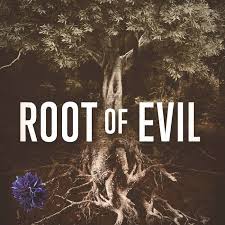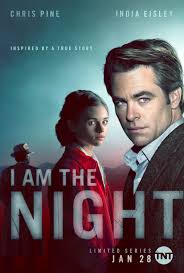I don’t have cable, so didn’t have access to I Am the Night until well after it had initially aired on TNT— but as a true crime fan, it was definitely on my radar. I fell upon the Root of Evil podcast first and was blown away. I knew it had something to do with the Black Dahlia murder, but the Black Dahlia part of it was in now way shape or form the wildest, or most fucked up part of that story.
The podcast starts with two sisters who sound quite lovely and like they have a solid relationship, talking about their mother, Fauna Hodel, who they clearly loved dearly and sounded like an amazing mother. Fauna was raised by a black mother and was told she was mixed race, but she grew up as a black woman who could pass for white. She then discovers that she was adopted and isn’t actually black, but has grown up her whole life thinking she was (that in and of itself could have been an interesting podcast.) She goes on a search to find her biological mother, and part of the reason the podcast can exist is because Fauna’s eventual daughters found a treasure trove of tapes of Fauna talking to her biological mother, Tamar. Fauna searches for Tamar, half hoping to find this TV-perfect mother she never had but even upon her first meeting, gets the sense that something is really off. In Hawaii, she meets Tamar and her half-siblings, one of whom warns her not to trust Tamar at all.
The story then gets deeper and deeper into this family history that is so bizarre that the Black Dahlia angle is one of the least bizarre parts. George Hodel, Tamar’s father, was this well-connected doctor who was part of the surrealist lifestyle and some really messed up “free love” circles. George is terrifying: he sounds like a brilliant psychopath who basically got away with everything he ever did. As if the story couldn’t get even weirder, years later, you hear from retired LA cop Steve Hodel, the son of George (although he never really knew his father). Looking for something to do with his spare time, Steve starts looking into cold cases, including the Black Dahlia, only to come closer and closer to thinking that his father was the murderer. Not only that, but that the Black Dahlia may have only been one of many, many murders. The podcast definitely makes it seem plausible: I had never known much about the Black Dahlia murder itself other than that the body of Elizabeth Short had been bisected, but really the full extent of what had been done to her is horrifying. (this podcast is not for the feint of heart.) George horribly abuses Tamar, and no one believes her when she tries to talk about it. It’s hard to see how Tamar even survived, which then makes you understand how she went on to horribly abuse her own children. At one point, the podcast features a family reunion of of Tamar’s children: it’s incredibly intense to hear such an intimate conversation.
The podcast was released as a companion piece to I Am the Night, so I was curious to see how the story would be told in a visual medium. I assumed that Chris Pine would be playing Steve Hodel as he researched the Black Dahlia.. But no, he’s playing a fictional character named Jay Singletary, a washed-up reporter with PTSD from Vietnam. As Fauna starts uncovering the story of Tamar and George, Jay helps her along. Here’s the thing—why? Jay didn’t even exist, so why did we need him, particularly when the whole Steve Hodel retired cop thing is so batshit crazy? Well, maybe Steve didn’t want to get involved— I don’t know. Look a this promo art: it makes you think the story is about Chris Pine’s character. I get that Chris Pine is more famous than India Eisley (Fauna), but she is a more than competent actress playing a really, really interesting character. I felt like the story was too much about Jay--his washed-upness, his PTSD, his trauma of being ignored the first time he tried to investigate George Hodel. The show is centered more on him than on Fauna, who is both real and more interesting. (And at least according to her daughters, an amazing person). You could fill an entire season with Fauna, and another season with Tamar—either or both should have been the center of the show. This was disappointing, and I was surprised when I found out that Patty Jenkins was the director. (Maybe she did Wonder Woman and felt like, you know, that movie didn’t have enough Chris Pine..?)
Ultimately the show covers about 10 percent of the Hodel story. Tamar says one thing about her father being terrible, but there’s way, way more to that story, and there’s only a brief moment on the beach where you get a sense of what the impact of all that abuse was on her personality. It doesn’t get into the third generation of Hodels (maybe the family didn’t want that stuff on the show? Not sure— because it was on the podcast and pretty much everything was on display in the podcast). It doesn’t get too much into the specifics of the Black Dahlia murder or the investigation that followed. The one thing I thought the show did really effectively were these really creepy flashes about George Hodel: he lives in this scary house, throws these profoundly Eyes Wide Shut parties, and there’s a lot of disturbing imagery surrounding him. Ultimately though, the time invested in the podcast is better spent.

